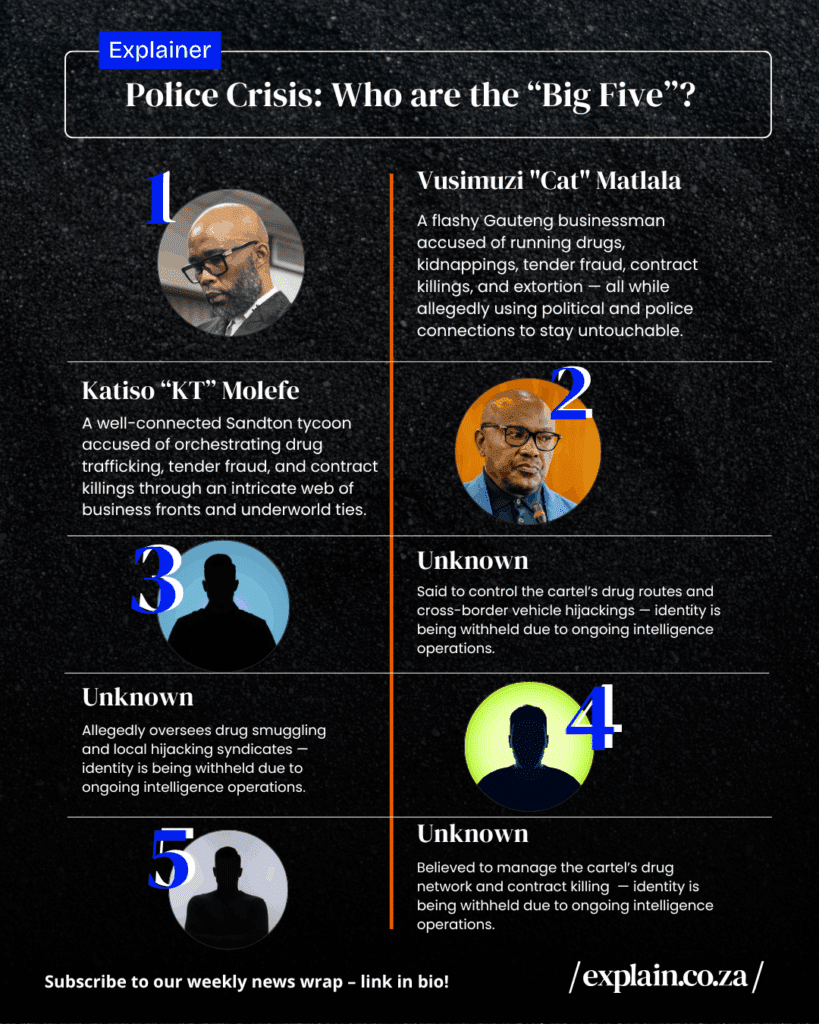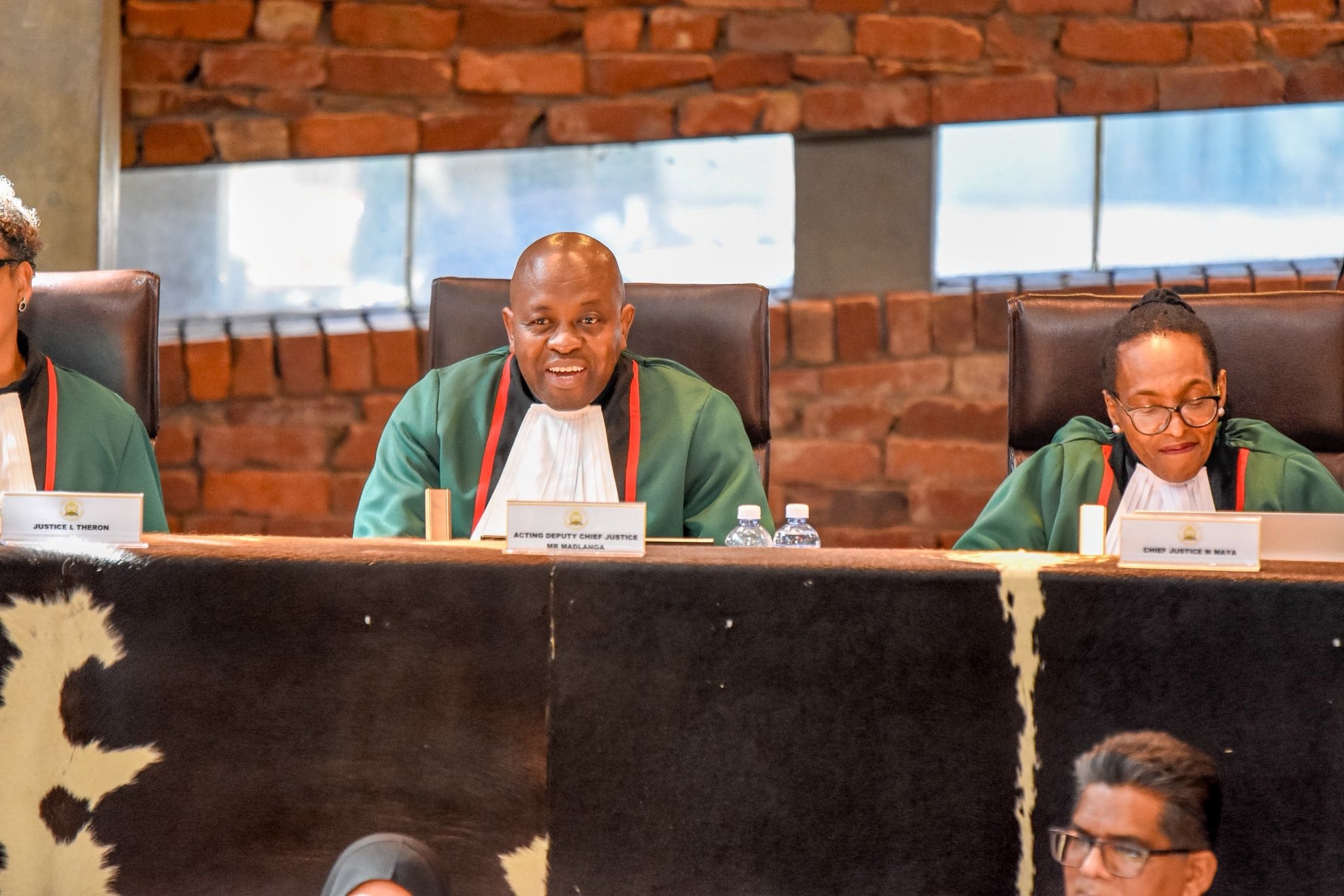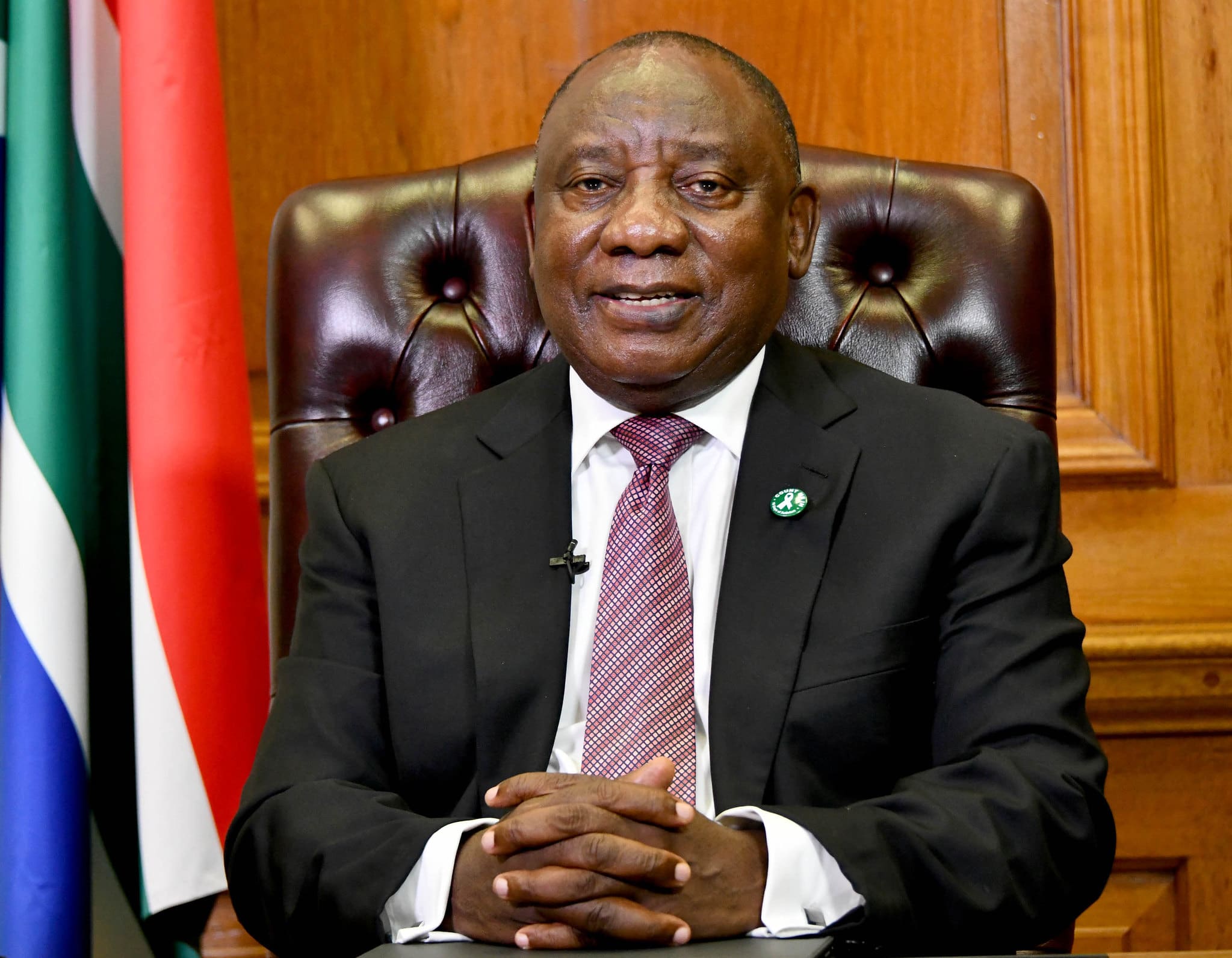A wave of shocking revelations about South Africa’s police (SAPs) has gripped the nation. From the Madlanga Commission to Parliament’s Ad Hoc Committee on SAPS plus ongoing court cases, every week seems to offer new details.
Read more: What is the Madlanga Commission? Inside South Africa’s explosive justice inquiry – Explain
Possibly the most startling of these? The existence of a powerful network dubbed “the Big Five”. This is apparently a shadowy Gauteng-based network that’s become a recurring villain in the various inquiries’ testimonies. Accused of running drugs, rigging tenders, and even orchestrating hits, this group is allegedly pulling strings in politics and law enforcement to stay untouchable.
Here’s what you need to know.
When did we first hear about the ‘Big Five’ cartel?
Back in July, KwaZulu-Natal Police Commissioner Lt-Gen Nhlanhla Mkhwanazi dragged many of these allegations into the light, instantly capturing South Africans’ attention. In an explosive press briefing, he painted a picture of syndicate infiltration, evidence of systemic rot, including WhatsApp chats and financial records exposing high-level collusion. At the heart of his allegations was the disbandment of the political killings task team (PKTT), a specialised unit set up to investigate politically motivated murders in KwaZulu-Natal. Mkhwanazi claimed that then-Police Minister Senzo Mchunu improperly ordered the disbanding of the PKTT, raising suspicions that powerful figures were being shielded. This was the first time the idea of a coordinated criminal network or cartel influencing the police and political system was publicly suggested.
Cut to the official start of the Madlanga Commission inquiry. The first official public allegation naming the network as the “Big Five” came from Lieutenant General Dumisani Khumalo, former head of Crime Intelligence. During his testimony at the Madlanga Commission on 29 September, Khumalo described the group as a sophisticated drug trafficking cartel with deep political and law enforcement links. As he told the commission:
“The Big Five has already penetrated the political sphere and there are documented cases of high-profile connections in the political arena, [with] senior politicians alleged to be complicit and/or wilfully blind to the syndicate operations.”
But here’s the thing: only two kingpins have been publicly named so far — Vusimuzi “Cat” Matlala and Katiso “KT” Molefe. The other three remain under wraps because of ongoing investigations, as Khumalo explained during his testimony.
Authorities, including the Political Killings Task Team (PKTT), know who they are but are keeping their names secret to avoid tipping off cartel members or their allies.
Khumalo stressed that these investigations are targeting high-level links across police, politics, and business, so keeping the names under wraps is a strategic move to protect both sources and evidence.
What exactly is the ‘Big Five’ cartel?
This Gauteng-based crime network has popped up repeatedly in hearings, accused of everything from drug trafficking and cross-border hijackings to tender fraud, kidnappings, extortion, and even contract killings, including links to political assassinations in KwaZulu-Natal. They allegedly funnel dirty money into political pockets (think ANC donations), rig government contracts, and infiltrate law enforcement to dodge investigations.
According to Lt-Gen Dumisani Khumalo’s testimony on 29 September, it’s a sophisticated drug trafficking cartel with international links that has penetrated South Africa’s political sphere and captured key elements of the criminal justice system.
How does the ‘Big Five’ operate?
The cartel is allegedly headquartered in Gauteng, the economic heart of the country, for strategic access. Key regions include KwaZulu-Natal and the Western Cape due to seaports and harbours essential for drug routes, as well as the Eastern Cape.
According to Khumalo’s bombshell testimony during the commission, the ‘Big Five’ has a core leadership of five ‘kingpins’, with smaller syndicates of experts handling specific crimes.
The smaller crews, about 10-12 experts each, handle specific crimes like drugs, hijackings, or extortion, so if one group gets busted, the rest keep rolling. Newbies often set up private security firms to score guns and look legit, while even retired members stay on as advisors or informants, cashing in on their loyalty.
Here’s the kicker: they recruit insiders (think cops, prosecutors, even politicians) to leak info or squash investigations. WhatsApp chats shown in the commission reveal bribes to officials and ANC event funding to buy influence.
Who are the ‘Big Five’?

As we said, only two kingpins have been publicly named so far, with three more still under wraps due to ongoing probes.
The two publicly named alleged leaders are:
🔹Vusimuzi “Cat” Matlala: A flashy Gauteng businessman and alleged “Big Five” kingpin, Matlala built his empire through lucrative state tenders and political connections. Accused of corruption, attempted murder, and police infiltration, his companies scored multimillion-rand deals while allegedly funnelling money and influence through powerful networks.
- Read our full profile on Matlala here, along with a summary of the allegations about him so far.
🔹Katiso “KT” Molefe: Sandton tycoon Katiso “KT” Molefe, 61, rose from public-sector roles to alleged underworld boss. Once a National Lotteries Board manager, he’s accused of masterminding drug, tender, and hit operations tied to political killings, with testimony linking him to Transnet engineer Armand Swart’s murder.
- Read our full profile on Molefe here, along with a summary of the allegations about him so far.
[WATCH] Crime Intelligence head Dumisani Khumalo says Vusimuzi Matlala and Katiso Molefe have been identified as part of a cartel dubbed the 'Big 5'. He adds that while three suspects cannot yet be named, the syndicate operates in drug trafficking, car hijackings, and… pic.twitter.com/6ejl9qBZxo
— Newzroom Afrika (@Newzroom405) September 29, 2025
There’s more, of course, and we’ll be unpacking it in our explainers in the upcoming weeks, in an ongoing series on the police crisis facing the country.
But at the end of the day, the very existence of the ‘Big Five’ paints a worrying picture of just how deep the rot might go, and how difficult it will be to untangle it. The Madlanga Commission still has weeks of hearings ahead, and alongside it, the Ad Hoc Parliamentary Committee on the SAPS is conducting its own probe, scrutinising tender irregularities, political interference, and law enforcement failures.
We’ll keep you updated as both inquiries reveal more about the cartel’s operations and high-level connections.
This story forms part of our ongoing series explaining the Madlanga Commission and the police crisis currently under the spotlight. Check out our latest here.
Emma is a freshly graduated Journalist from Stellenbosch University, who also holds an Honours in history. She joined the explain team, eager to provide thorough and truthful information and connect with her generation.
- Emma Solomon
- Emma Solomon




